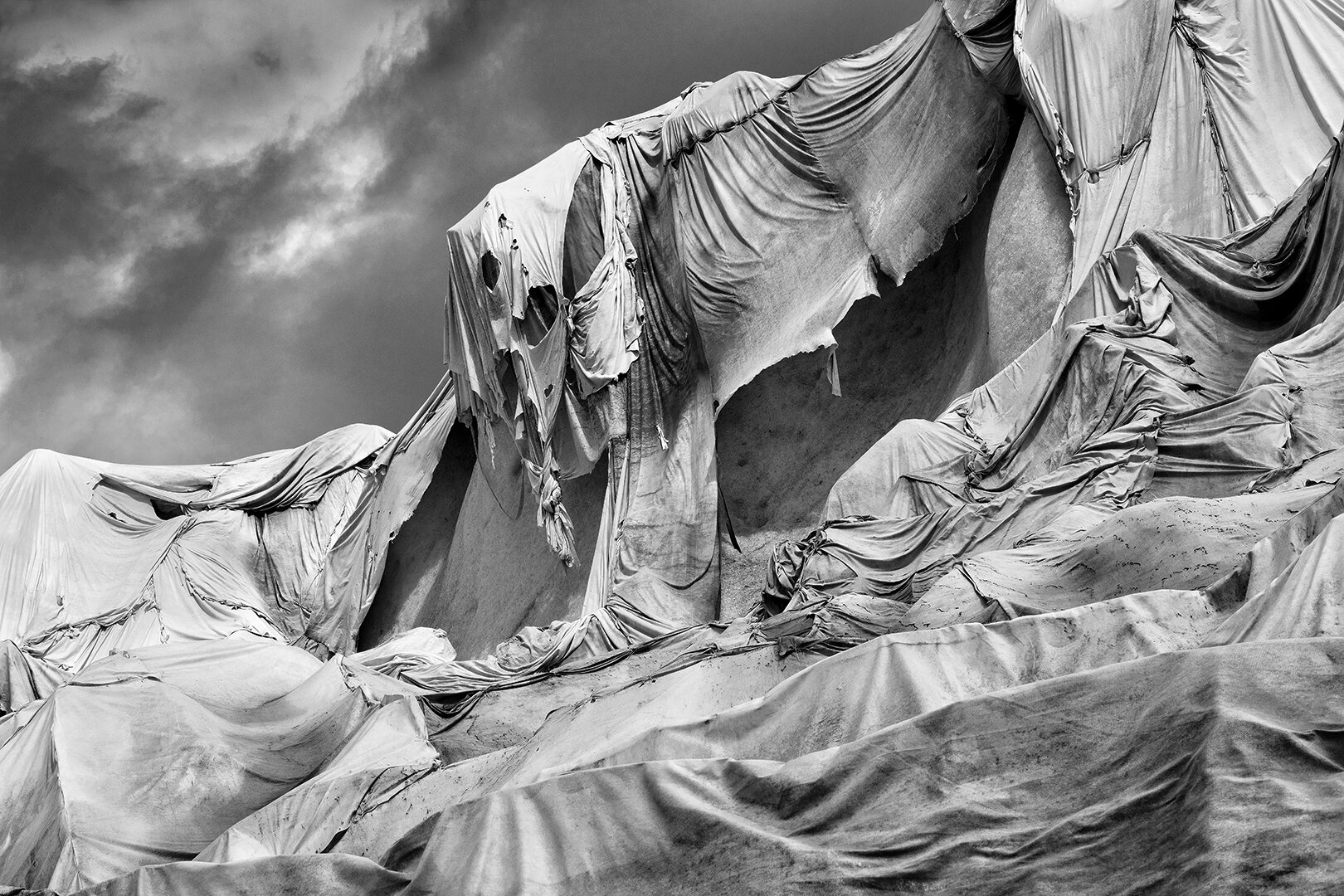This week’s topic of Methods & Meaning takes us on a deeper journey into the creative choices we make as photographers. This section questions the strategies and methods used in making bodies of work, their dissemination and display, and how this is interpreted by viewers. We start any body of work with a concept, which begins with describing and defining the rationale; the intention or the purpose of our goal. Once the concept is clear, we then move on to the methods used. Methods are processes within various stages of photographic practices. They are the photographer’s strategies used to employ a concept such as research, planning, capture, output and dissemination. The photographer’s methodology used is the system or applications of methods. The methodology is all things that inform that strategy.
The concept of photographing without methods or meaning is a foreign one in my work as a landscape photographer. Every photographic journey usually entails meticulous planning and execution, from analyzing the weather forecast, planning the trip and all that entails from analyzing maps, to hotel, flight and boat bookings, to organizing my equipment and clothing. These procedural functions are necessary because often my concepts are to create a body of work in a remote and distant location without access to anything.
I think in this sense my use of the medium is not to record spontaneous brief moments in life, but rather to work in conjunction with premeditated rigor – with strict structures and restraints to the creative process. While there are certainly surprises and what I consider gifts along the way, my methodology is very much the result of all the methods going into my photographic practices, and concepts carefully planned and executed. It is clearly the opposite of Henri Cartier-Bresson’s ‘decisive moment’, although he was also quite methodical and detailed in his approach.
“To me, photography is the simultaneous recognition, in a fraction of a second, of the significance of an event as well as of forms which give that event its proper expression. (Cartier-Bresson, Henri. 1952.The Decisive Moment. New York, Simon & Schuster, )
There might be moments when I am in the field and a situation arises where an event happens and I have fraction of a second to capture the image, like in the case of a bird flying by, or capturing a storm, but these situations are the exception in my work. In contrast, I often find myself sitting for hours waiting for the perfect light.
Additionally, I certainly do not use a ‘shoot first, ask questions later’ kind of approach from Victor Burgin. (Burgin, Victor. 1998. Campany, p. 281, 2003). My concepts are relatively clear in that I set out to photograph a particular location, which is at imminent risk of climate change (hence my work in the Cryosphere). While it is not always possible to show aggregated effects of climate change, I can show the current state of the environment and even the astonishing but fragile beauty of it.
An illustration of my work from initial concept, to utilizing various methods resulting in my methodology can be seen in my series Anthropocene – Vanishing Landscapes, 2018, which exhibited in Canada, 2018 before moving on to be exhibited in Switzerland, 2018/2019. Some of the photos from this series were taken at the Rhone Glacier in Switzerland where the effects of climate change are notable in the thousands of meters of cloth covering part of the glacier’s cave, attempting to stave off the inevitable and accelerated melting. One method I use on location is to take a broader topographical perspective to allow the viewer a frame of reference as seen below in first photo, Rhone Glacier I. I then like to create more intimate portraits showing detail as seen below with in the Rhone Glacier II & III, where without the first photo, the viewer might not understand what they are looking at. It is often only with the broader topographical image combined with the closeup perspectives, that the viewer is able to reference what is taking place and thereby understand the narrative. At least this is my intention.
Rhone Glacier II, Photo by Dawna Mueller, 2018
What is relevant in this project is that the series illustrates the gravity of the situation. My method of editing in black and white is to remove the distraction of color, thereby allowing the interplay of light and shadows to create the intensity of form for the viewer. The use of black and white in my images facilitates my concept of capturing the gravity and urgency of the issues I focus on.
As my work requires time, thought and reflection, it is not often I find unintended surprises. In Topic 2 of Methods & Meaning, I am inspired to play more when I am on location. To take more chances once I feel I have captured my intended shot. I am inspired by so many of the great photographers from Henri Cartier-Bresson, Man Ray, to Brassai, as well as Sara Moon, Viviane Maier and so many more. While completely different from my work, they inspire me with their complexity, the execution of their concepts and the various methods used to create their narratives. Viewing their work and others over the decades has allowed my eyes to see more discerningly, to be moved by the visual story, and to adopt photography as the language of my heart.
Rhone Glacier III, Photo by Dawna Mueller, 2018



